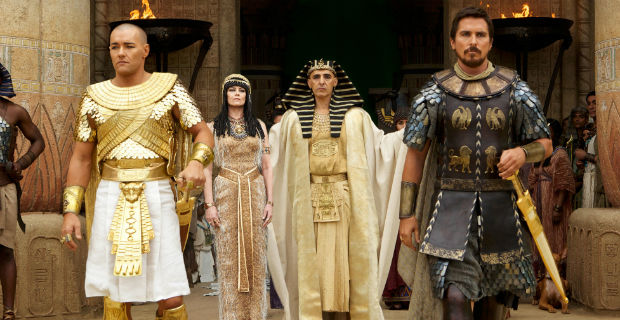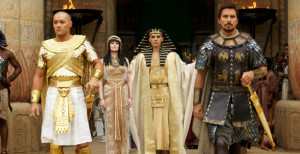Taipei Times
By Paul Schemm
AP, Ouarzazate, Morocco
“QUIET!” The cry rings out in English, French and Arabic across the cobblestoned streets of Jerusalem, as filming begins for a scene in the series AD The Bible Continues.
But while the arched doorways, balconies and furnishings all say Roman-era Israel, the real-life setting is southern Morocco.
Viewers in America and elsewhere in the world may not know it but they have seen a lot of Morocco in the past year. It has served as the Baghdad of American Sniper, the Tehran seen in TV series Homeland, the Mali of American Odyssey and the Egypt that will appear in the miniseries King Tut. Morocco has also been Somalia numerous times, including in the 2001 film Blackhawk Down, and more recently in the 2013 Captain Philips. And it will be Saudi Arabia in this year’s Hologram for a King starring Tom Hanks.
All in all, it has been a banner year for Morocco’s status as a gigantic film-set — with US$120 million spent by foreign film productions in the country last year, more than in the past five years put together.
The North African kingdom is riding high on its reputation for stability and exotic locales, but industry officials say that Morocco needs to do more — and offer more incentives — to realize its potential as a filming destination. It is contending with increasingly stiff competition from South Africa and other countries that offer deep tax rebates.
For Morocco’s film industry, the future depends on the right package of sweeteners to persuade studios to do more than just film exteriors here but also use local facilities. The ultimate goal is to get Hollywood to film entire movies in Morocco, said Sarim Fassi-Fihri, head of the Moroccan Center for Cinematography, which oversees the industry.
“The day tax incentives come to Morocco, the whole industry will move here,” he said, cutting a cinematic figure himself, sporting a fedora and puffing on a cigar.
“If we make $120 million today, with tax incentives we could go up to US$200 to US$250 million.”
He pulled out a sheaf of publicity brochures from competitors in Turkey, Colombia, Macedonia, the Netherlands, Ireland, even the Canadian province of Manitoba, with promised tax rebates of 20 to 40 percent plastered across the covers to entice film companies.
Ever since 1962, when David Lean filmed scenes from Lawrence of Arabia in Morocco, film companies have been using its deserts, mountains and cities as stand-ins for exotic locations. At the vast Atlas Studios complex in Ouarzazate — Morocco’s desert Hollywood perched between the High Atlas and the Sahara — there are sets from dozens of movies from the past decades.
Here, it’s possible to ride the camel used by Nicole Kidman in the upcoming Queen of the Desert past the pharaonic sets from 2002 French film Asterix and Obelix Meet Cleopatra to the fortifications Ridley Scott built to recreate medieval Jerusalem for the 2005 crusader film Kingdom of Heaven.
Morocco has fallen in and out of fashion as a movie set over the decades. One mainstay has been biblical films, and that business is booming now with the bible-craze taking off in America. At one point over the winter, there were three actors playing Jesus in different productions staying at the main hotel in Ouarzazate.
The new boom comes off some lean years, beginning with the 2008 global financial crisis and exacerbated by the 2011 Arab Spring unrest that led insurers to pull film companies out of the Middle East. But in the case of Morocco, they came back.








